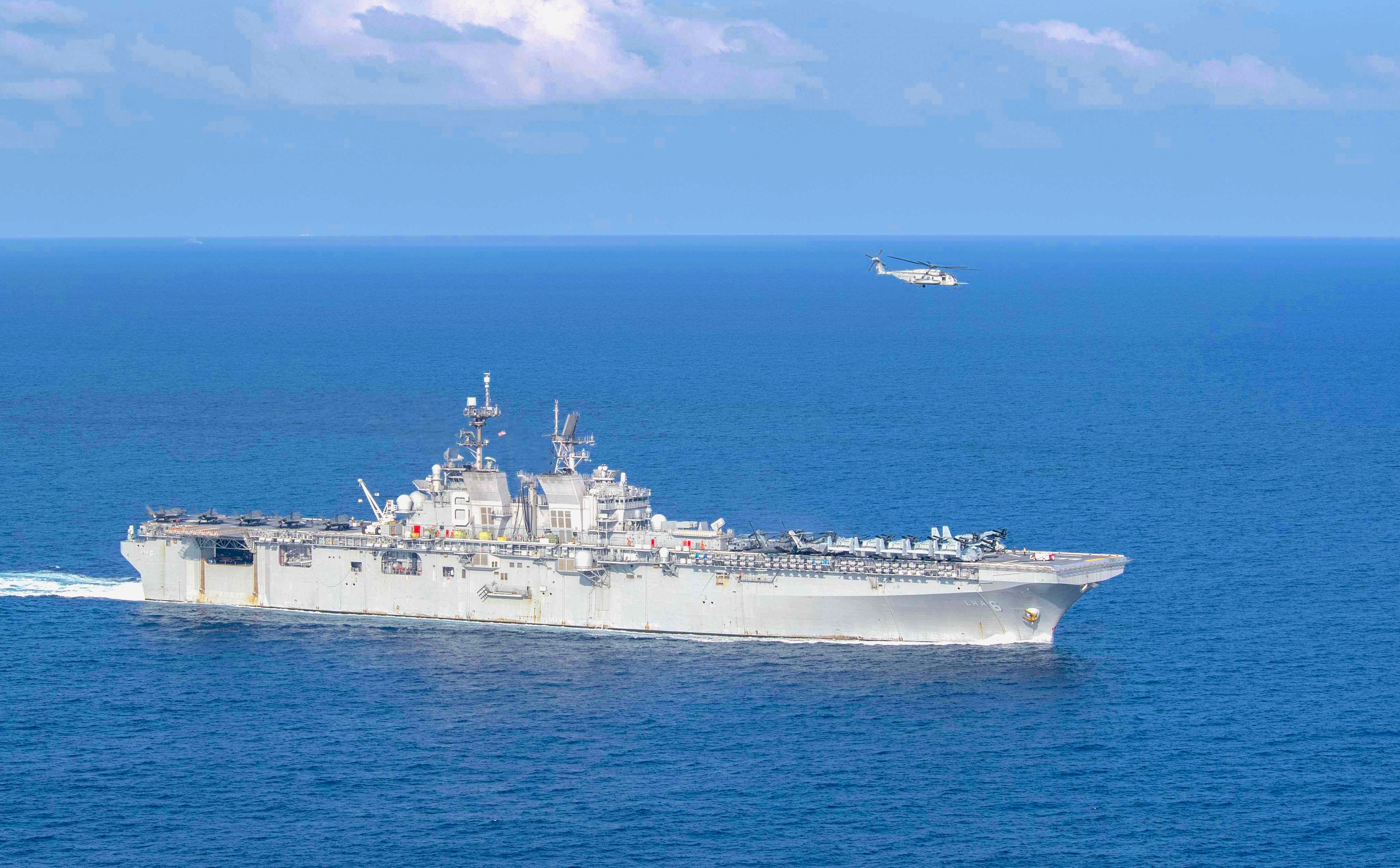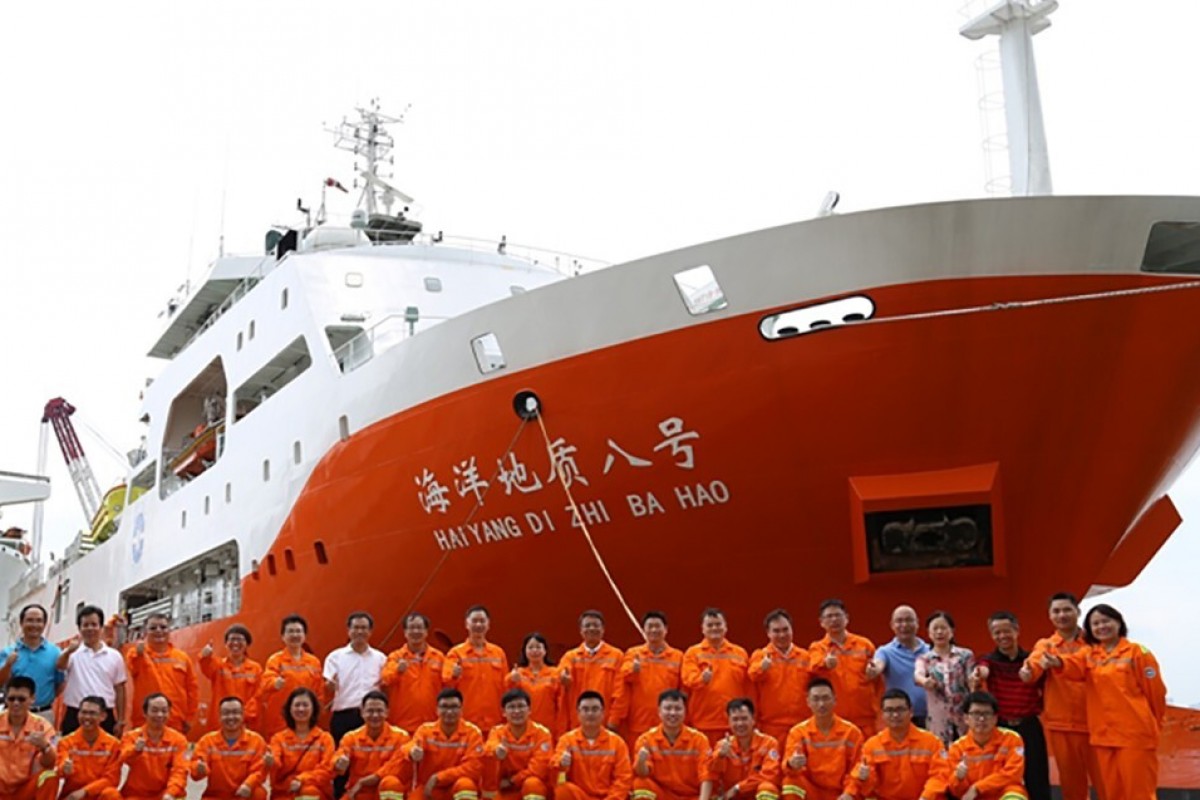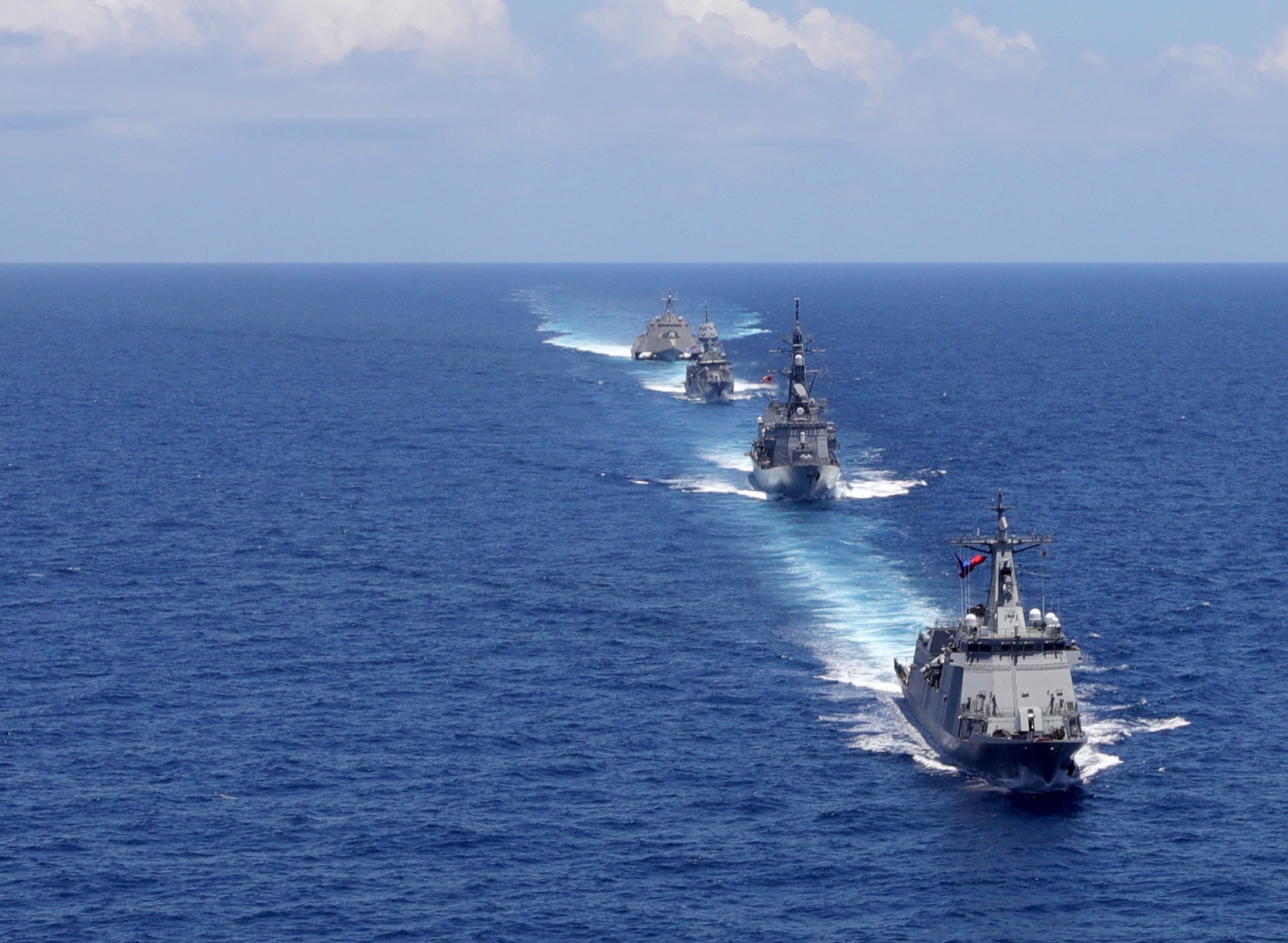
KUALA LUMPUR — USS America (LHA-6) is steaming towards waters in the South China Sea where a Chinese government survey ship and its China Coast Guard escorts are in an international maritime dispute with Malaysia.
As of Saturday, America was operating with at least five Marine F-35B Lightning II fighters as well as MV-22Bs tiltrotors and CH-53 helicopters as part of the typical Marine air combat element configuration aboard the amphibious warship. With the aircraft carrier USS Theodore Roosevelt (CVN-71) temporarily sidelined in Guam, America is currently the most significant operational naval asset the U.S Navy has in the region as China flexes its maritime presence.
The Chinese are operating in disputed waters about 200 nautical miles off the coast of East Malaysia that are claimed by Malaysia, Vietnam and China. The region is believed to be mineral-rich and has been an active area of contention since the drillship West Capella, under contract to Malaysia’s state oil company, Petronas, began exploration activities in October.
The Malaysian exploration triggered a flurry of patrols and presence operations by China Coast Guard and maritime militia ships, Vietnamese maritime militia ships and ships of the Royal Malaysian Navy and Malaysian Maritime Enforcement Agency (also known as the Malaysian Coast Guard). China Coast Guard ships have also been maintaining a continuous presence at the Luconia Shoals, which lies in Malaysia’s Exclusive Economic Zone and is also claimed by China. These ships have also made patrols close to Malaysian oil platforms in Malaysia’s EEZ. Despite all the activity, no at-sea incidents have been reported, and all three governments are content to keep matters out of the public eye.

Malaysian Maritime Enforcement Agency head Admiral Zubil Mat Som confirmed to Malaysian media on April 16 that Haiyang Dizhi 8 had entered Malaysia’s EEZ and that the MMEA was monitoring the ship and indicated the ship was operating legally. The Malaysian Foreign Ministry and Defence Ministry declined to comment to the press. With the Royal Malaysian Navy also busy monitoring the Andaman Sea entrance of the Malacca Straits to prevent Rohingya refugee ships from entering Peninsular Malaysia, as well as conducting routine operations throughout Malaysian waters, the service’s 45-ship fleet is often hard-pressed to maintain presence.
Over the weekend, the U.S. called out China’s “bullying” actions related to the ship, according to a report in Reuters.
“The United States is concerned by reports of China’s repeated provocative actions aimed at the offshore oil and gas development of other claimant states,” the U.S. State Department said in a statement over the weekend.
China “should cease its bullying behavior and refrain from engaging in this type of provocative and destabilizing activity.”
For its part, China is denying any wrongdoing in the disputes.
Malaysia and China have a strong economic relationship, and Malaysia has ordered four 68-meter Keris-class Littoral Mission Ship (LMS) from China. First-of-class KD Keris arrived in Malaysia in January, but the second ship, Sundang, has had its delivery and commissioning, which was scheduled to take place in April in China, delayed due to the outbreak of the COVID-19 virus. The remaining two ships were to be delivered in 2021, which could also be delayed because the ships are to be built in Wuhan, the origin of the current outbreak.
Meanwhile, the two U.S Littoral Combat Ships rotationally deployed to Singapore, USS Montgomery (LCS-8) and USS Gabrielle Giffords (LCS-10), are both operating in the South China Sea, according to Navy news releases.





